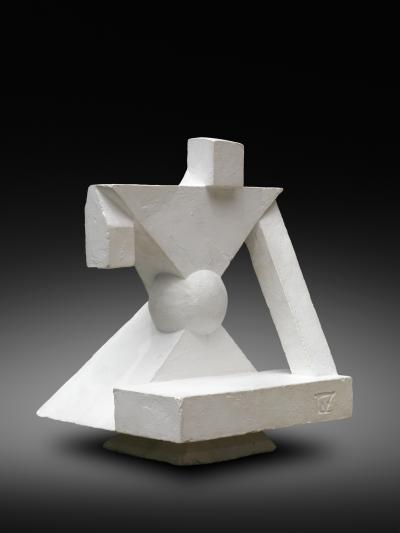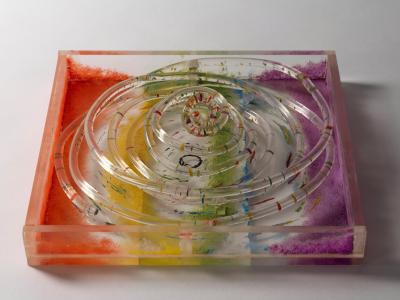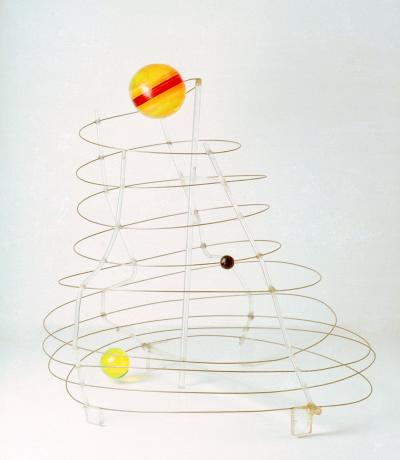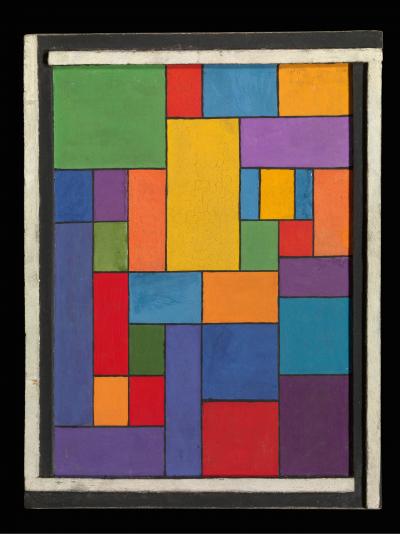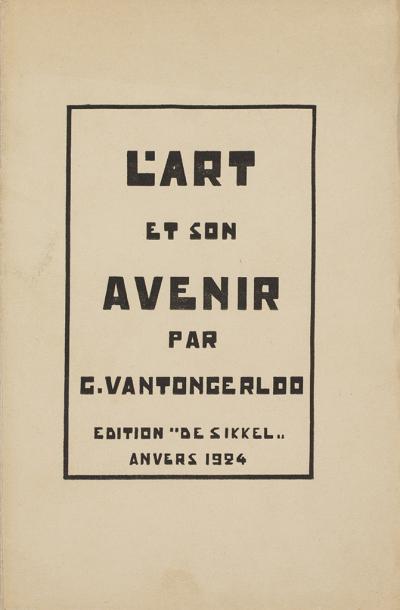In 1917, Vantongerloo took his first steps as a modern artist. The reading of the manifesto The New Image in Painting by Theo van Doesburg, the leading figure of the artistic movement De Stijl, was of great importance. Fascinated, Vantongerloo made contact with him; the first exchange of letters led to an intimate friendship between the two artists. Under the influence of Van Doesburg, the work of Vantongerloo becomes evermore abstract. Beginning in 1919, his interest also begins more and more to gravitate towards colour; in various articles that appear in De Stijl, the artist systematically develops a complex theory of colour. With the use of this theory, according to Vantongerloo, perfect balanced, harmonic works can be realised. An example of one such composition is Study I, Brussels (1920). In this geometric-abstract painting, the viewer finds a series of colours that Vantongerloo places within his colour theory: red, orange, yellow, green, blue, indigo and violet.
In 1920, the year in which he painted Study I, Brussels, the artist moved to Menton in the South of France. The already troubled relationship with his Dutch correspondents began to increasingly wane even more from that moment onwards.
Study 1, Brussels

Artist
Production date
1920
Collection
Object number
K002113a
Material
casein paint on cardboard
Dimensions
50.5 cm x 62 cm x 2 cm
Keywords
CC BY (Creative Commons 4.0)
